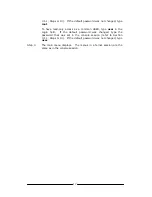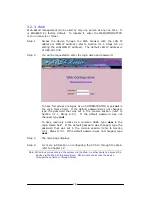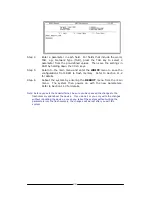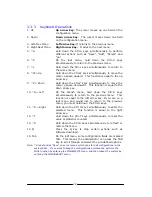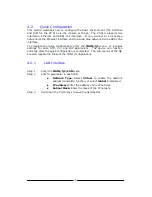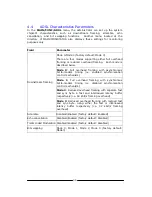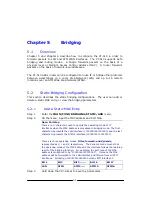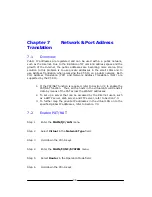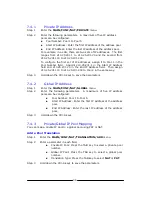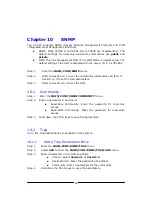
28
nrtVBR –
Non-real Time Variable Bit Rate. This class allows
users to send traffic at a rate that varies with time depending on
the availability of user information. Statistical multiplexing is
provided to make optimum use of network resources. Multimedia
e-mail is an example of VBR-NRT.
Peak Cell Rate (bps):
The Peak Cell Rate is the maximum
number of bits per second transmitted over this connection. This
is determined by the minimum intercell spacing in seconds, which
is the time interval from the first bit of one cell to the first bit of
the next cell. The PCR ranges from 30,000 to 960,000.
Sustainable Cell Rate (bps):
For VBR only. This is the rate at
which cells are transmitted over this connection. The rate is
counted in bits per second. The SCR is larger than 30000 and
smaller than the PCR.
Burst Tolerance (msec) (refer to maximum Burst size):
For
VBR only. This is the maximum number of cells that is sent at
the peak rate. The number of cells is counted in milli-seconds.
The BT ranges from 10 to 200.
Note: MBS (Maximum Burst Size) formula:
〔
1+
PCR
SCR
BT
1
1
−
〕
where
〔
x
〕
stands for the integer part of x. In the formula: BT is counted in
seconds and SCR/ PCR in cells per second.
Step 4 Hold down the Ctrl-S keys to save the parameters.
4.2.4 ISP
ISP should be configured when PPP or PPPOE is selected. The CT-510 can be
connected to eight ISPs respectively with different VPI/VCI values. The
procedure below shows how to configure the necessary parameters to connect
to an ISP.
Step 1
Enter the
MAIN/QC/ISP
menu.
Step 2
Enter a leaf menu from
ISP 1
to
ISP 8
, e.g., MAIN/QC/ISP/ISP1.
Step 3
Enter a parameter in each field.
ISP name
: Up to 19 characters
User name
: Account user name for logging on to an ISP; up to
19 characters
Password
: Account password for logging on to an ISP; up to 19
characters
PPPoE Max Idle Time
: The default is 0
Step 4
Hold down the Ctrl-S keys to save the parameters.




